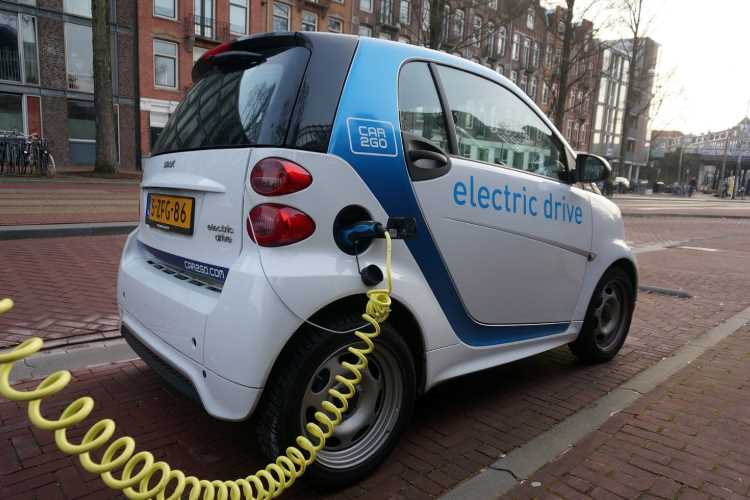
Electric vehicles are hailed as the future of mobility that will end the dependence on carbon fuels. Surging EV sales have prompted experts to accelerate their forecasts for the peak of global oil consumption. Bolstered by public subsidies and technological advancements, consumer interest in battery-powered vehicles has surged. Presently, EV adoption suggests that world oil consumption may peak by the end of this decade at 103 million barrels per day, revising the 2017 forecast of a 105 million barrels per day peak in 2040, as reported by the Paris-based International Energy Agency,
Despite being viewed as the holy grail of mobility, EVs carry a not-so-green aspect. Analysts point out that EVs, though emission-free on the road, are indirectly polluting, as their electricity often comes from non-renewable sources. This is particularly true in countries like India, where coal, a highly polluting source, still dominates electricity generation. Thus, while EVs might not produce visible pollution, their environmental impact is still significant.
READ | Chinese economy faces uncertainty amid shifting global dynamics
Electric vehicles are not totally green
Researchers indicate that using coal-generated electricity to power EVs is only marginally better than using gasoline in internal combustion engines. Significant reductions in EV-related emissions will only occur when the electricity is sourced from clean, renewable methods like wind or solar power.
Another concern lies in EV battery production. These batteries rely on various metals such as nickel, cobalt, and lithium. The mining and processing of these minerals, along with the battery manufacturing process, result in substantial carbon emissions. There are also indirect environmental consequences of mineral mining, including ecological damage like mass fish kills, excessive freshwater consumption, and harsh chemical usage for metal extraction. Consequently, EVs may not be as eco-friendly as often advertised.
Speaking at the Policy Circle Sustainability Summit earlier this year, Blusmart co-founder Anmol Singh Jaggi acknowledged that 100% sustainability is unattainable with EVs, suggesting that the goal is to make incremental improvements. Thus, EVs are considered a lesser evil compared to carbon fuel-based vehicles.
Lifecycle analysis key to estimating environment impact
The environmental impact of EVs extends beyond tailpipe emissions. A holistic lifecycle analysis, as emphasised by the World Business Council for Sustainable Development’s 2023 report on EV life cycle assessment, is crucial to assess the environmental footprint of battery production, including resource extraction, manufacturing, and end-of-life disposal. Implementing sustainable practices in battery production, promoting efficient recycling, and designing longer-lasting batteries are key to mitigating the environmental impact of EVs throughout their lifecycle.
Carbon-fuelled vehicles are major contributors to global air pollution, and sustainable transportation is a top priority for policymakers. The transportation sector accounts for about 60% of world oil demand, with the United States alone comprising around 10%, as per the IEA. It is projected that by 2030, EVs will have offset about 5 million barrels per day of global oil demand. While EVs have somewhat reduced the carbon footprint, they are not the ultimate solution.
Hydrogen cell vehicles as alternatives
Looking ahead, hydrogen vehicles present a promising alternative to EVs. Hydrogen can be refuelled quickly using existing infrastructure, unlike the substantial financial and infrastructural requirements of EVs. Moreover, hydrogen cars do not face the range and recharging time issues common with EVs. The main challenge in producing hydrogen vehicles lies in the necessity of platinum, though research is advancing towards finding a substitute.
The success of the EV transition hinges upon robust charging infrastructure, particularly in urban areas. McKinsey & Company estimates that achieving a 40% EV market share by 2030 will necessitate a tenfold increase in global charging points. This requires substantial investments in public charging infrastructure, including grid upgrades and smart charging solutions. Additionally, urban planning needs to prioritise walkable, bike-friendly environments and efficient public transportation systems to reduce reliance on personal vehicles.
Debates are ongoing about whether governments should incentivise electrification without adding new vehicles to congested roads. Retrofitting, converting existing petrol/diesel vehicles to electric, is argued as a more efficient and sustainable solution. Indian startups like Bharat Mobi are exploring this area, offering conversion kits for existing vehicles. Retrofitting can extend a vehicle’s lifespan by five to seven years, avoiding scrappage policies and offering economic benefits. For example, upgrading an old internal combustion engine two-wheeler might cost between Rs 50,000–1,00,000, while a new electric model with similar power could cost up to Rs 1.5 lakh. Furthermore, manufacturing new cars entails significant industrial pollution from sectors like steel and petrochemicals.
With 1.3 billion vehicles in use globally and EVs expected to comprise 40%-45% of the market by the end of this decade (up from the current 13%), the shift to EVs is significant. However, to align with the Paris Agreement target, the IEA states that EV sales need to reach about 70% of the market by 2030.
Governments are implementing regulations to reduce vehicle numbers to ease congestion and lower emissions. Consumers are increasingly favouring efficient, eco-friendly, and convenient transport options. As technology progresses, innovative solutions like roboshuttles and urban air taxis may become more prevalent. A McKinsey report also suggests a growing trend towards micromobility (e.g., e-bikes and e-scooters) and shared mobility over the coming decade.
Government policies play a critical role in driving the EV transition. Implementing stringent carbon emission standards, fuel economy regulations, and incentives for public transport and micromobility can further accelerate the adoption of sustainable transportation solutions. The Global EV Outlook 2023 emphasises the need for harmonised international regulations to facilitate global EV adoption and ensure a level playing field for the industry.
